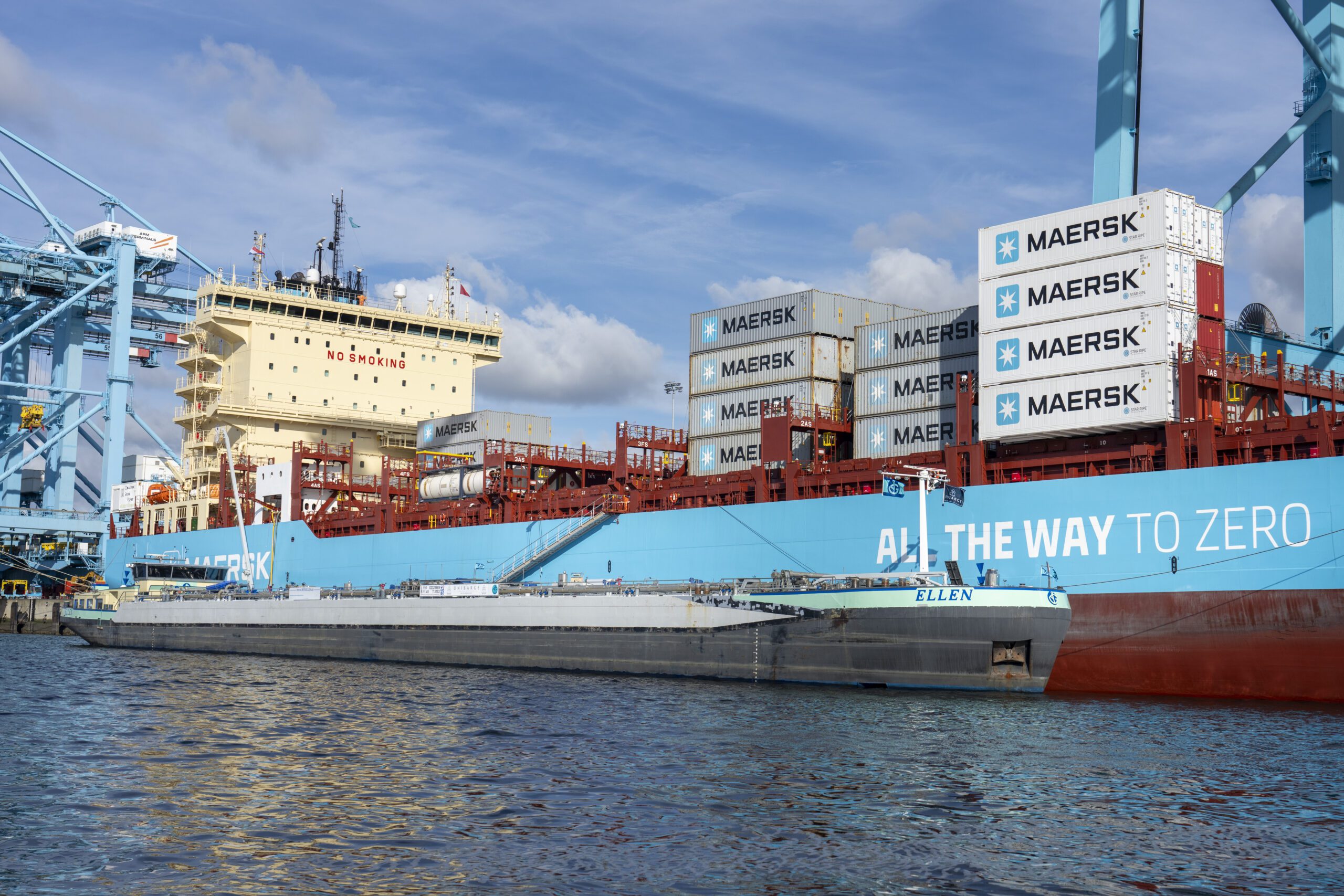By Sofia Gerace
Sep 2, 2023 (Bloomberg) –Ports in Europe are racing to win a key role in the bloc’s ambitious climate strategy as they try to evolve from entry points for fossil-fuel imports into industrial clusters for clean energy.
In the region’s biggest seaport in Rotterdam, port authorities and major energy companies are developing a large-scale network that will include clean power supplied by offshore wind farms, as well as hydrogen production and pipelines to ship the fuel to manufacturers on-site and inland.
The European Union is helping finance the bloc’s green transformation: It has already allocated more than €16 billion ($17.4 billion) for hydrogen-related projects and will award another €5 billion in aid to key cross-border initiatives around November.
“Ports will be more than leaders in the energy transition; they will help green Europe and trigger a clean shift in the sector globally,” said Ruud Kempener, a member of the EU energy commissioner’s political office. “Hydrogen production can be developed there with wind energy and then distributed across Europe. Harbors are already transitioning to clean sources of energy, as is the industry around ports.”
As part of its RePowerEU strategy to shift away from Russian fossil fuels and accelerate the green shift, the 27-nation EU pledged to produce 10 million tons of renewable hydrogen — made with renewable power breaking up water molecules — and import another 10 million tons by 2030. Ports are set to play a strategic role in the development of the market, both as hubs for imports, as well as investors in infrastructure to produce, store, and distribute hydrogen.
By 2050, as much as 42% of total demand for hydrogen in the EU could be located in port areas, mostly driven by industries and the international shipping sector, according to a study by Deloitte Belgium. Hydrogen has the potential to replace natural gas in heat generation for industrial processes and become an important energy carrier in aviation, shipping and heavy road transport.
Read more: Germany Plans to Rely on Imports for Bulk of Hydrogen Supplies
The Port of Rotterdam plans to provide the northwestern part of the continent with at least 4.6 million tons of hydrogen by the end of this decade, contributing to nearly a quarter of the overall EU goal.
Under a project co-financed by the Dutch government and companies including Shell, BP and Air Liquide, production plants, or electrolyzers, will be located in 24 hectares of reclaimed land close to the Maas River, or Maasvlakte, and powered by offshore wind farms. The project is to be ready by 2025 and the port expects its capacity to eventually reach 2-2.5 gigawatts by 2030, becoming the largest electrolysis production site in the EU.
“RePowerEU requires a huge amount of hydrogen, it is mind-blowing,” said Nico Van Dooren, director of new business development and portfolio at the port of Rotterdam. “There is increasing demand for green hydrogen from various industries and it will continue to grow.” The hydrogen plants in Rotterdam will be connected to refineries at the port through a network of pipelines worth as much as €1.5 billion, according to the port’s estimates. Gasunie, the state-owned Dutch energy infrastructure operator, already pledged to invest €100 million in the links. In the next step, the port wants to expand the network and by 2027 ship green hydrogen across Belgium and Germany, through the so-called Delta Rhine corridor, a pipeline of almost 300 kilometers (186 miles).
The Port of Antwerp-Bruges is also discussing hydrogen projects with investors, according to its chief executive Jacques Vandermeiren.
“The place where you have to start the transition from fossil fuels to renewable molecules and electrons for sure is ports,” he said. “We are discussing with companies on the projects and on the location. But I see a huge interest from companies for having storage capacity pipelines, but also production sites.”
It’s not just the ports that are making the green transition — the ships themselves are also beginning the shift to cleaner fuels. A.P. Moller-Maersk A/S, the world’s No. 2 container carrier, in June ordered six methanol-powered ships for delivery starting in 2026, bringing its total orderbook of vessels burning that kind of fuel to 25.
Read Also: Port of Rotterdam, Vopak in Race for $2.8 Billion Hydrogen Port in South Africa
The clean energy infrastructure across Europe is set to get a new financial boost when the EU finalizes this autumn a decision on what projects qualify for aid as cross-border links key to the bloc’s energy transition.
In preliminary talks in June, officials concluded that the Bar-Mar hydrogen pipeline from Barcelona to Marseille — which could be expanded to Berlin — would be eligible for green-infrastructure financing. Other projects that got the tentative green light include a link between Portugal and Spain as well as Nordic pipelines that would bring Swedish and Finnish renewable hydrogen into Germany.
In ports and coastal areas, the replacement of fossil fuels by renewable hydrogen could reduce 655 million tons of carbon dioxide, equivalent to 16% of all EU emissions in 2019, according to Deloitte.
Read Also: Spain Risking Billions to Export Green Hydrogen
“Ports are changing,” said Marcel van de Kar, global director of new energies at Koninklijke Vopak NV, a Dutch tank storage company that plans to invest €1 billion in clean energy infrastructure globally. “It’s like combustion engine cars versus electric vehicles: From the outside seems they did not change dramatically but in fact it is a completely different product.”
–With assistance from Ewa Krukowska, Jorge Valero and Brendan Murray.
© 2023 Bloomberg L.P.

 Join The Club
Join The Club











